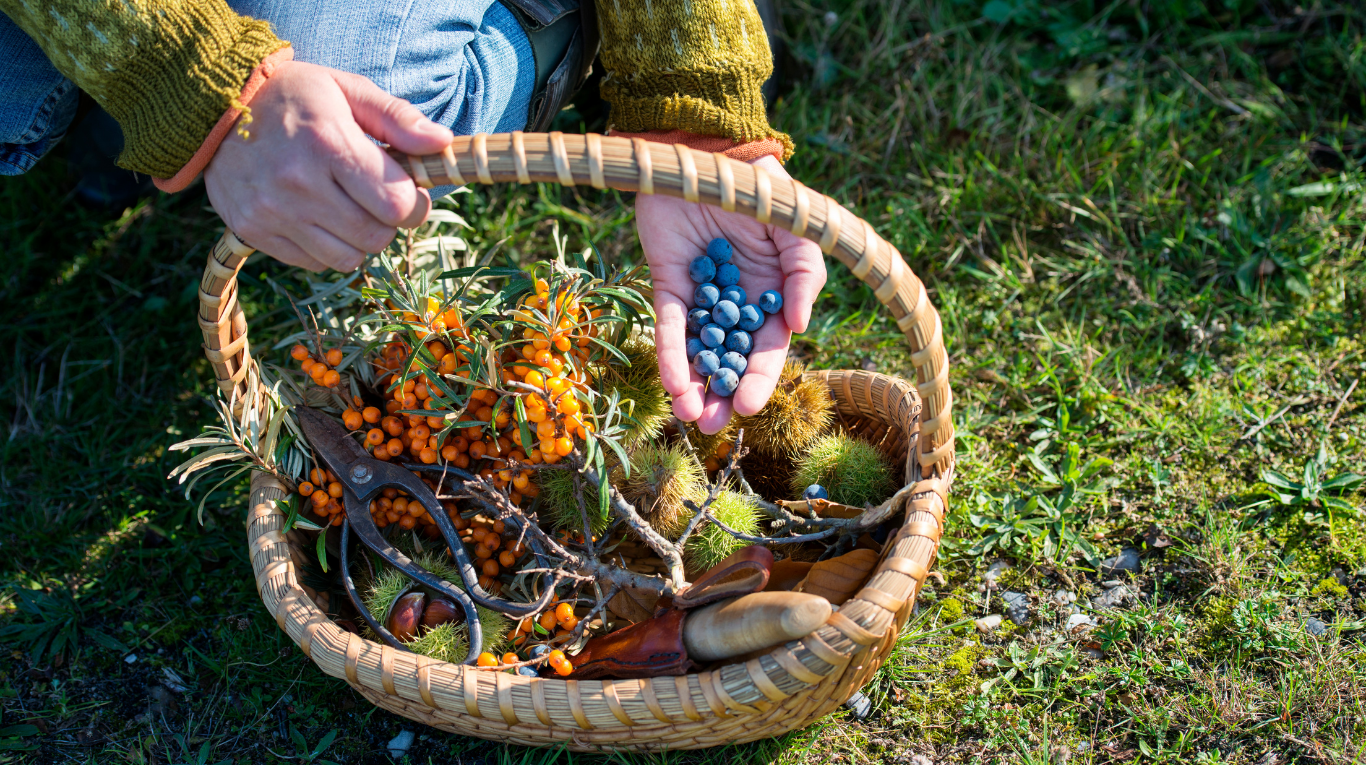
The best meals don’t just fill us, they restore balance. Every responsible choice gives something back to the world that feeds us.
What we eat leaves a trace
Every ingredient has a story. Some leave scars, clear-cut forests, polluted rivers, or exhausted soils. Others leave strength — thriving ecosystems, fair livelihoods, and restored landscapes. When we choose food, we choose which story continues. Responsible food choices aren’t about guilt or perfection; they’re about knowing that our plates can contribute to solutions, not problems.
When food gives back to nature
Some food systems take endlessly from the planet. Others give back, enriching soil, sustaining biodiversity, and reducing waste.
Wild-harvested foods, regenerative agriculture, and well-managed fisheries work with nature’s cycles instead of against them. For instance, in Canada, 30.1 million kg of wild fish and 21.4 million kg of wild meat are sustainably harvested and consumed, each year, producing large quantities of food for people, without damaging the natural world (Conservation Visions 2025).
By supporting foods that regenerate rather than deplete, we can help rebuild the natural systems that make all food possible.
Research shows that diverse, low-impact food systems reduce carbon emissions, protect pollinators, and restore water quality. They turn agriculture into a restorative force rather than a destructive one (FAO, 2023).
When food gives back to people
Behind every harvest is a human story. Buying from local farmers, fishers, and foragers helps value their skills and supports communities that live closest to the land.
In many regions, these relationships are what keep conservation going — giving communities tangible reasons to care for wildlife, forests, and rivers.
When we pay attention to where food comes from and how it’s made, we reward fairness and integrity across the chain — not exploitation or waste.
Knowing your food
“Fair” food doesn’t have to come with a label. It often looks like knowing who caught your fish, who raised your meat, or who grew your vegetables. It looks like buying closer to home, wasting less, and supporting producers who respect both people and place.
This kind of eating restores trust, between consumers and producers, between cities and rural areas, between people and the planet.
The ripple effect of what we eat
Food connects every part of life, economy, culture, climate, and community. Each choice is small, but together they shape the kind of world we’re creating. When food gives back, it nourishes more than bodies. It nourishes ecosystems, livelihoods, and hope.
Every meal is a chance to restore, not just consume. Choose food that gives back.
Share the message
If this inspired you, share it, and help others see that food can heal more than hunger.
References
· FAO. (2023). Building a sustainable agrifood system: Key actions for food security and the environment. Available at: https://openknowledge.fao.org/items/1516eb79-8b43-400e-b3cb-130fd70853b0
· IPBES. (2022). Assessment Report on the Sustainable Use of Wild Species. Available at: https://www.unep.org/resources/report/assessment-report-sustainable-use-wild-species
· UNEP. (2021). Food Waste Index Report. Available at: https://www.unep.org/resources/report/unep-food-waste-index-report-2021
· FAO High Level Panel of Experts. (2019). Agroecological and other innovative approaches for sustainable agriculture and food systems. Available at: https://openknowledge.fao.org/server/api/core/bitstreams/ff385e60-0693-40fe-9a6b-79bbef05202c/content
· Conservation Visions. (2025). Dietary Impact of Recreational Hunting and Fishing in Canada. St. John’s (NL): Conservation Visions, Wild Harvest Initiative®